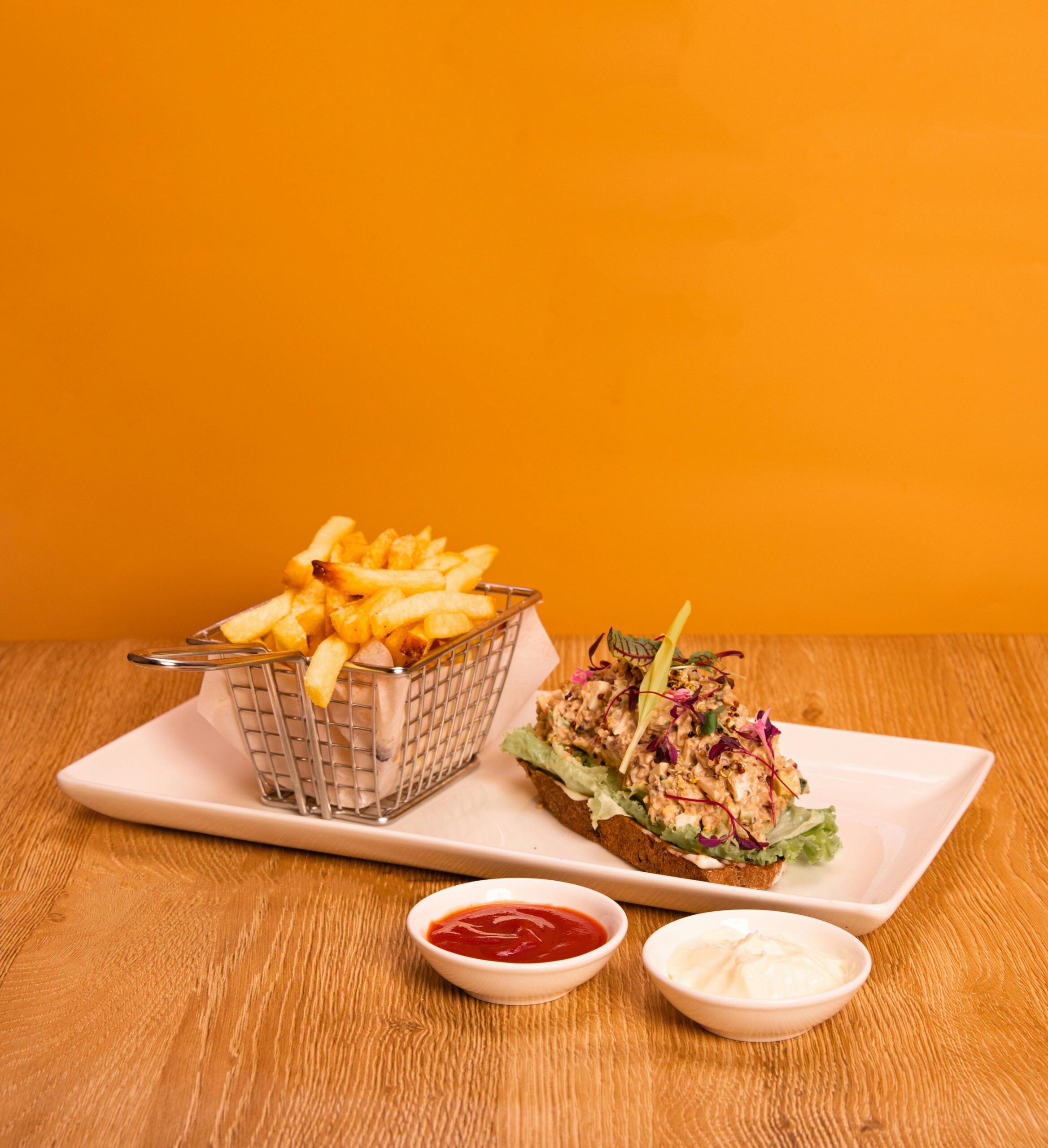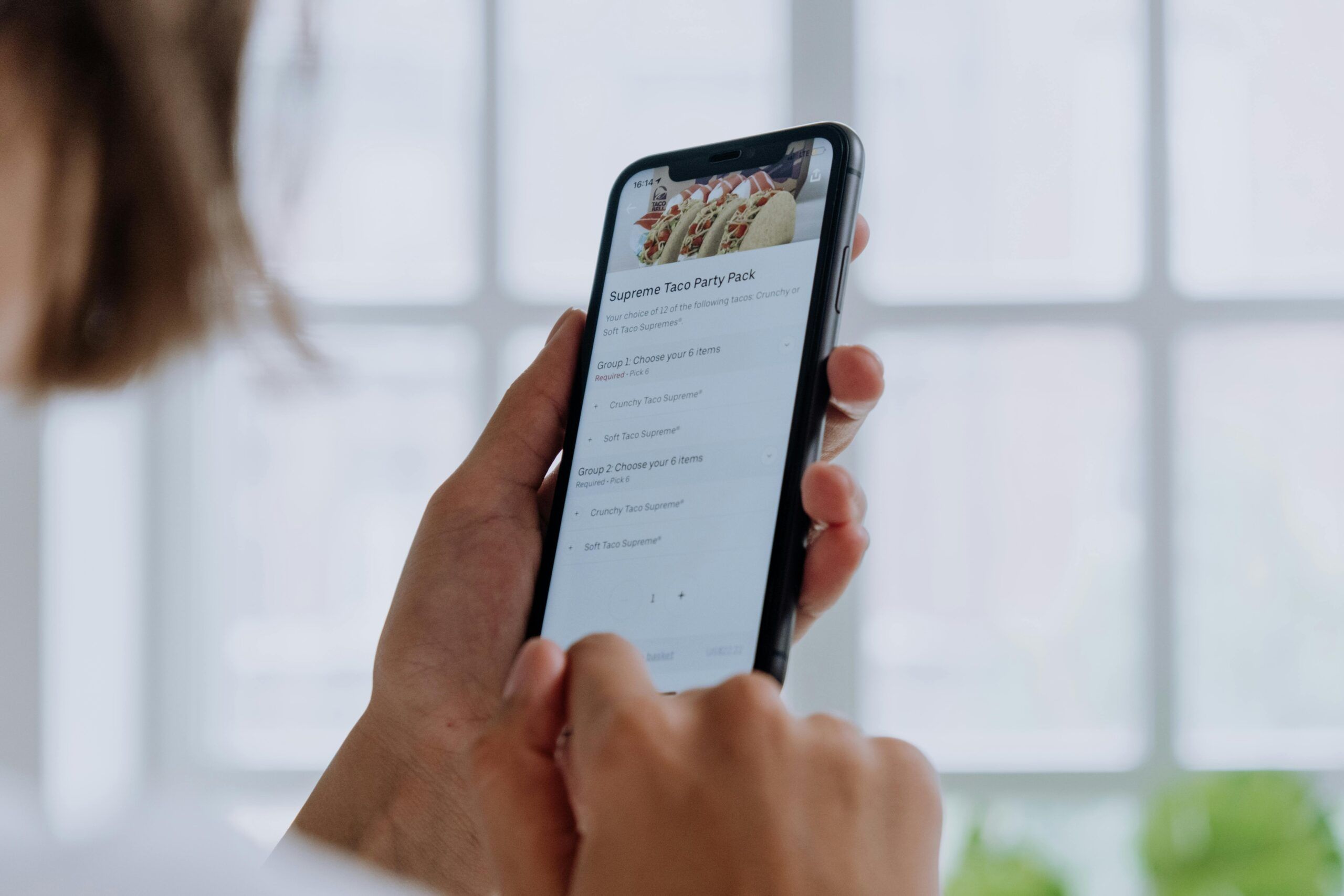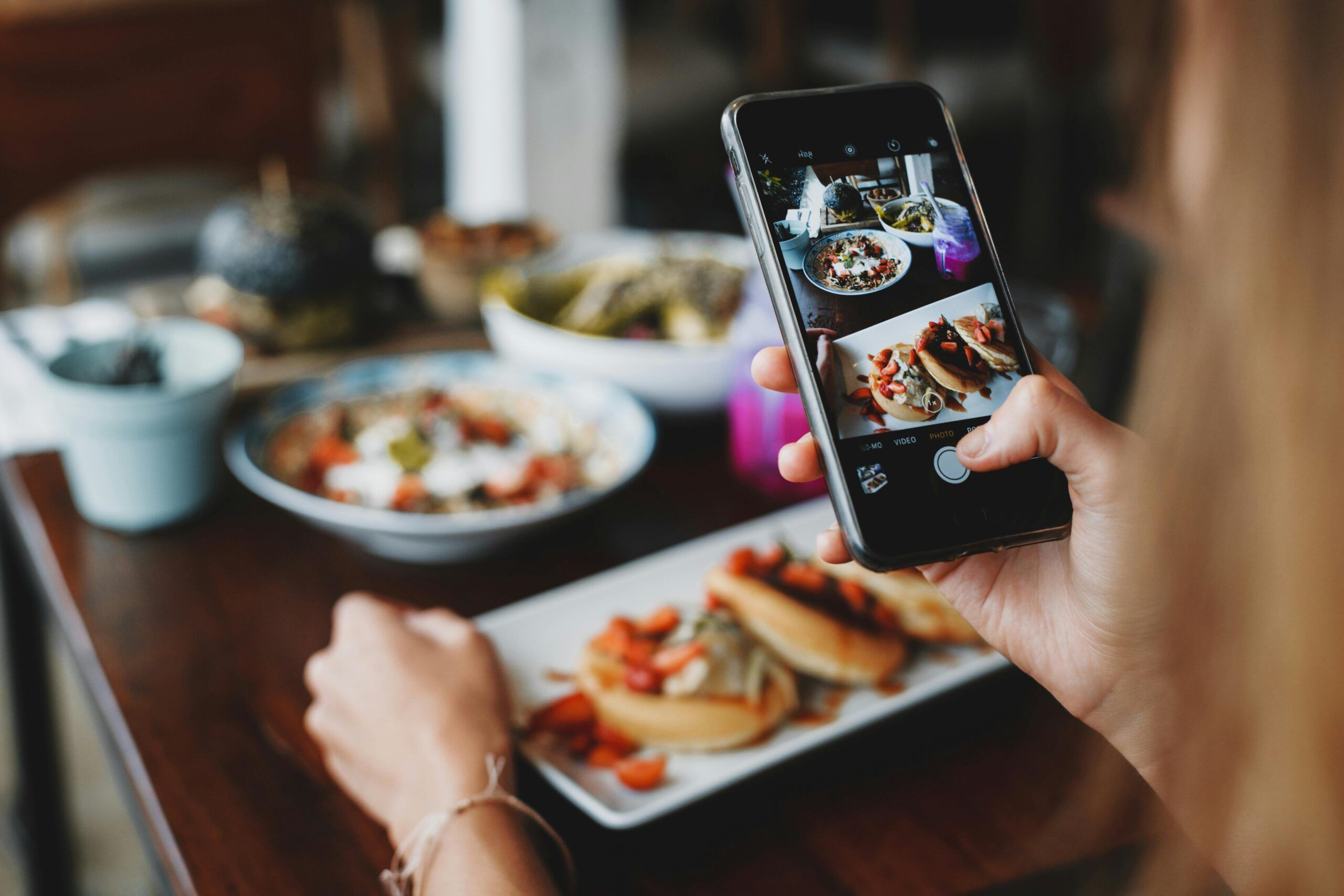- But Seriously, How Is AI For Restaurants Changing The Game?
- AI At Your Service OR Tech Benefits In Action
- Live Examples Of AI Transforming Restaurants
- Ethical Use Of AI For Restaurants: Overcoming Challenges And Respecting Privacy
- Summing Up: AI’s Impact On Restaurant Innovation
- FAQ
Imagine walking into your restaurant and seeing everything running smoothly—orders flowing seamlessly, inventory perfectly balanced, and customers delighted with personalized service. What if I told you that such precision and efficiency isn’t just a dream but can be your new reality with the help of AI and machine learning?
In the bustling world of hospitality, staying ahead as an independent restaurant isn’t just about the best ingredients or the most unique dishes; it’s increasingly about smart technology. Over the last four years, the adoption of AI in the restaurant industry has skyrocketed by a staggering 270%! This isn’t just a trend; it’s a transformation that’s reshaping how restaurants operate, making them smarter, more responsive, and ultimately, more profitable.
So, whether you’re running a cozy café or a sprawling eatery, understanding how to harness AI and machine learning can significantly enhance your operations and customer experience.
Let’s dive into how these technologies are not just futuristic concepts but practical tools that are already helping restaurants thrive.
Key Takeaways
- AI is reshaping restaurant operations, improving efficiency and customer satisfaction through automation and data analysis.
- Top restaurants are leveraging AI to enhance the customer experience, from personalized service to optimized inventory management.
- Machine learning assists in accurately forecasting demand, which helps restaurants prepare for peak times without over or underestimating needs.
- AI tools are user-friendly and integrate seamlessly with existing restaurant management systems, making technological adoption smoother.
- Ethical considerations, such as privacy and employment impacts, are crucial when implementing AI in restaurants.
- Real-world examples include Starbucks, Domino’s, and Chili’s, showcasing how AI contributes to loyalty programs, operational efficiency, and customer feedback analysis.
But Seriously, How Is AI For Restaurants Changing The Game?
You might be wondering, what exactly do we mean by AI and machine learning in your restaurant’s context? Let’s simplify it. Artificial Intelligence (AI) is the broad concept where machines perform tasks that usually require human intelligence. This includes making decisions and recognizing patterns. Machine learning is a subset of AI. It’s the technology that lets these machines learn from data and improve over time, all without direct human intervention.
This distinction is important. It shows how AI can bring innovative solutions that improve your restaurant’s operations. AI can remember a regular’s favorite table or dish, creating a more personalized dining experience. It can also predict which ingredients will be in demand next week. The potential here is vast.
Concerned about the technical aspects? Don’t worry. Today’s AI tools are built to be user-friendly. They integrate smoothly into your existing systems, making them easy to adopt and manage.
As you explore these options, view AI not just as a high-tech novelty. Think of it as a practical toolset that’s becoming essential for staying competitive and pleasing customers in a rapidly evolving industry.
Also, read:
- Harnessing the Power of AI and Machine Learning for Your Restaurant
- Mastering Restaurant Online Ordering: Strategies for Maximizing Efficiency and Profit
- The Comprehensive Guide to Streamlining Your Online Ordering System
- Cutting-Edge Marketing Tactics for Boosting Your Restaurant’s Visibility
- Strategic Growth: Success Stories from Expanding Restaurants
- Numbers Don’t Lie: Using Data-Driven Strategies for Restaurant Financial Management
AI At Your Service OR Tech Benefits In Action
Now that we’ve unpacked AI and machine learning, let’s see them in action in the restaurant world. Top restaurants are using these smart technologies to make their operations smoother, improve customer service, and increase their profits. Here’s a look at the ways AI is making a big impact:
- Smoother Operations: AI is transforming everyday restaurant tasks. It helps manage inventory and schedule staff efficiently, especially during busy times. AI also automates tasks like taking reservations and processing orders, freeing up your team to focus on serving guests better.
- Better Customer Service: AI isn’t just behind the scenes; it’s in the front line too. Chatbots and virtual assistants handle questions, take orders, and even suggest personalized menu recommendations. This speeds up service and adds a personal touch that customers love.
- Accurate Demand Forecasting: AI uses past sales data and considers factors like seasons and local events to predict how busy your restaurant will be. This smart forecasting helps you plan better, so you’re never overstocked or underprepared.
These tools show that AI is more than just tech buzz; it’s a practical asset for any restaurant looking to stay competitive and delight customers today.
Live Examples Of AI Transforming Restaurants
Let’s delve into some notable real-world examples to see how leading restaurants are harnessing the power of AI and machine learning to revolutionize their operations and customer experiences.
1. Starbucks
Starbucks is effectively using artificial intelligence (AI) to enhance its Starbucks Rewards program, increasing customer spending and visit frequency. The company’s AI tool, Deep Brew, is used to customize promotions for different customer segments, significantly boosting participation in the loyalty program.
Recent data shows a 13% year-over-year increase in active Starbucks Rewards members in the U.S., totaling 34.3 million. Partnerships with companies like Bank of America and Delta Air Lines have further driven customer engagement.
Digital orders have also seen significant growth, with mobile orders comprising 30% of all transactions this quarter. Additionally, Starbucks’ delivery service, in partnership with DoorDash, grew nearly 80% year-over-year, though it still represents only a small fraction (2%) of total transactions.
2. Domino’s Pizza
Domino’s Pizza and Microsoft have partnered to revolutionize pizza ordering and store operations using AI and cloud computing. This collaboration will use Microsoft’s Azure OpenAI Service to personalize the customer ordering experience and streamline store operations.
The partnership aims to develop AI tools to assist with inventory management, staff scheduling, and to enhance overall store management efficiency. These innovations are designed to improve both the customer experience and the productivity of store operations. Domino’s plans to pilot these AI-driven solutions within the next six months.
3. Chili’s Grill & Bar
Chili’s, managed by Brinker International, is integrating AI to transform how it gathers and analyzes customer feedback across over 300 locations. Using a customer feedback technology platform, Chili’s aims to simplify the collection and analysis of guest feedback to enhance service and operational efficiency.
David Weston, Brinker’s VP of International Business and Global Development, explains that AI helps pinpoint areas for improvement, enhancing guest satisfaction significantly. The AI-driven feedback analysis allows franchisees to see clear, actionable data, helping to optimize restaurant operations and guest experiences.
4. KFC (Beijing)
KFC China is experimenting with facial recognition technology at its Beijing location to personalize customer orders, developed in collaboration with Baidu. The system suggests menu items based on the customer’s estimated age and mood.
Despite its potential for enhancing convenience, customer reception remains lukewarm, with many preferring traditional ordering methods. Concerns about privacy and the implications of data storage continue to be significant, highlighting a trade-off between technological convenience and personal privacy.
5. Caliburger
CaliBurger introduced a new restaurant in Shoreline, Washington, packed with high-tech innovations, including a fully autonomous robotic kitchen assistant named Flippy and facial recognition for ordering and payment.
This marked the first new CaliBurger location since early 2020 and features advancements aimed at improving food quality, consistency, and customer service while reducing wait times and labor costs. Flippy handles tasks such as frying and cooking various menu items, with real-time image recognition for quality control. The new systems are designed to enhance the customer experience and increase operational efficiency, allowing staff to focus more on customer interactions.
These examples showcase how AI and machine learning transform and fundamentally enhance how restaurants operate, interact with customers, and manage their internal processes.
Ethical Use Of AI For Restaurants: Overcoming Challenges And Respecting Privacy
Your Inbox, Your Rules!
Tailor your newsletter with the topics you're most interested in.
While embracing AI technology offers numerous advantages, restaurants must navigate challenges and ethical considerations. Key among these is the concern for customer privacy, especially with technologies like facial recognition.
Restaurants must ensure robust data protection measures are in place to safeguard personal information. Transparency with customers about how their data is being used and giving them control over their information can help mitigate privacy concerns.
Another challenge is the potential impact on employment. While AI can relieve staff of mundane tasks, there is a risk of job displacement. To address this, restaurants can focus on retraining employees to work alongside AI technologies, shifting the job focus from repetitive tasks to more customer-centric roles that require human touch, such as customer service and management.
Ultimately, the goal is to integrate AI in a way that complements the human workforce, enhances the dining experience, and respects customer privacy, creating a harmonious balance between technology and traditional restaurant values.
Summing Up: AI’s Impact On Restaurant Innovation
By fostering a culture of ongoing innovation and learning, independent restaurants can improve how they operate and serve customers, setting themselves up for success in a competitive market.
As AI keeps evolving, the restaurants that will stand out are those that see technology not just as a way to cut costs, but as a way to grow and transform their business.
Orders.co rolls out several features that make managing your restaurant smoother and smarter by automating and integrating essential operations.
Orders.co’s AI Website Builder lets you whip up an ordering website in no time. This tool removes the stress of web design, freeing you up to focus on your food and customers.
Direct Ordering Website With Mobile Optimization
Orders.co ensures your custom ordering website works flawlessly on mobile devices. It syncs well with various POS systems for safe transactions, providing a swift and easy browsing experience. This means customers can easily order from anywhere, boosting their satisfaction and your sales.
Online Restaurant Orders Management
This tool pulls all your orders—from your site, app, or third-party platforms—into one spot. This online orders management system simplifies the whole ordering process, cutting down errors, speeding up service, and making customers happier.
Menu Management
Updating your menu becomes a breeze with Orders.co’s smart menu management system. It’s simple to tweak menu items, change prices, or push promotions, keeping your menu fresh and accurate across all channels.
AI-Powered Marketing Solutions
Tap into AI to automate customer interactions via SMS and email. Orders.co’s marketing tools get to know your customers’ likes and tailor your campaigns to boost orders and keep customers coming back.
Loyalty Reward Program
Set up a loyalty rewards program that rewards your regulars with points and perks. Orders.co automates the nitty-gritty, boosting engagement and loyalty without the fuss.
Local SEO Optimization
Raise your restaurant’s profile in local search results with Orders.co’s robust local business optimization tool. These manage your online presence, making sure you’re seen in local directories and boosting your local visibility.
Reporting and Integrations
Get a clear view of how your business is doing with Orders.co’s essential reports. Plus, it plays nice with over 30 POS and third-party apps, keeping your operations smooth and your data in sync.
Looking to make your restaurant operations more efficient and engaging? Why not see Orders.co in action?
Book a quick, free demo today and discover how easy managing your restaurant can be with the right technology at your fingertips.
FAQ
1. What are the first steps to integrating AI into my restaurant?
If you’re considering adopting AI for your restaurant, begin by evaluating your current technological infrastructure and identifying key areas that could benefit from automation and enhanced data analytics. Consulting with AI solution providers who specialize in the restaurant industry can also offer tailored insights.
2. How can AI for restaurants improve customer loyalty?
AI enhances customer loyalty by personalizing the dining experience. By analyzing customer behavior and preferences, AI-driven systems can offer personalized menu recommendations, tailor special offers, and optimize loyalty programs to keep customers coming back.
3. Are there any privacy concerns I should be aware of when using restaurant AI?
Yes, implementing AI in restaurants involves handling personal customer data, which raises privacy concerns. It’s crucial to adhere to data protection regulations, ensure transparent data usage policies, and provide customers with control over their data to mitigate privacy risks.
4. Can AI in the restaurant industry predict market trends?
Yes, AI can analyze large datasets to predict market trends, helping restaurant owners make informed decisions about menu changes, pricing strategies, and marketing campaigns. This predictive capability allows restaurants to stay ahead of the curve in a competitive market.
5. What are the costs associated with implementing artificial intelligence in restaurants?
The costs can vary widely depending on the complexity of the AI solutions and the scale of implementation. Basic AI tools like chatbots or recommendation engines may be more affordable, while comprehensive AI systems that manage inventory, staffing, and customer relations require a more significant investment.
6. How does machine learning in the restaurant industry enhance operational efficiency?
Machine learning algorithms improve operational efficiency by optimizing inventory management, predicting peak demand periods, and automating routine tasks. This allows staff to focus on customer service and other critical areas, reducing costs and improving overall efficiency.
7. What should I consider when choosing an AI provider for my restaurant?
When selecting an AI provider, consider their experience in the restaurant industry, the scalability of their solutions, ease of integration with your existing systems, and the level of customer support they offer. It’s also wise to request case studies or demos to better understand how their solutions work in real settings.
8. How can AI help in managing the supply chain for a restaurant?
AI for restaurants can optimize supply chain management by forecasting inventory needs, tracking stock levels in real-time, and automating orders from suppliers. This reduces waste, lowers costs, and ensures that restaurants can meet customer demand without overstocking or running out of essential items.



